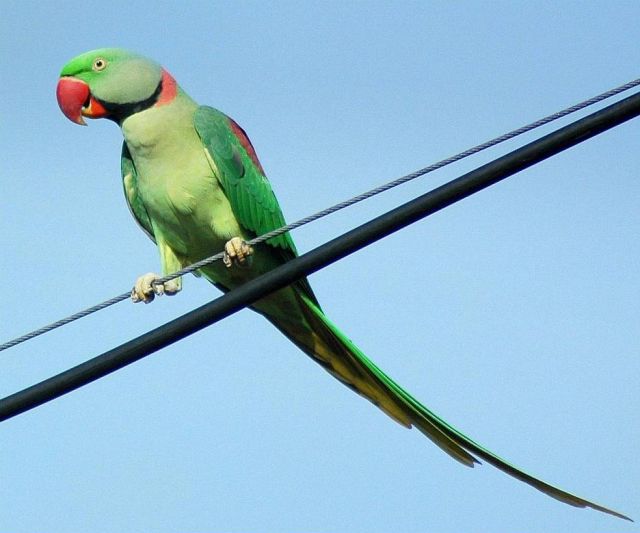
Alexandrine Parrot Facts, Behavior as Pets, Price, Pictures
The alexandrine parakeet is an Indian rose-ringed parakeet commonly known as the Alexandrine parakeet. However, scientifically, it is named psittacula eupatria.. Furthermore, comparing the tail feathers of a male or female alexandrine parakeet, young male parakeets are similar to females but have shorter tails. Diet and Nutrition.
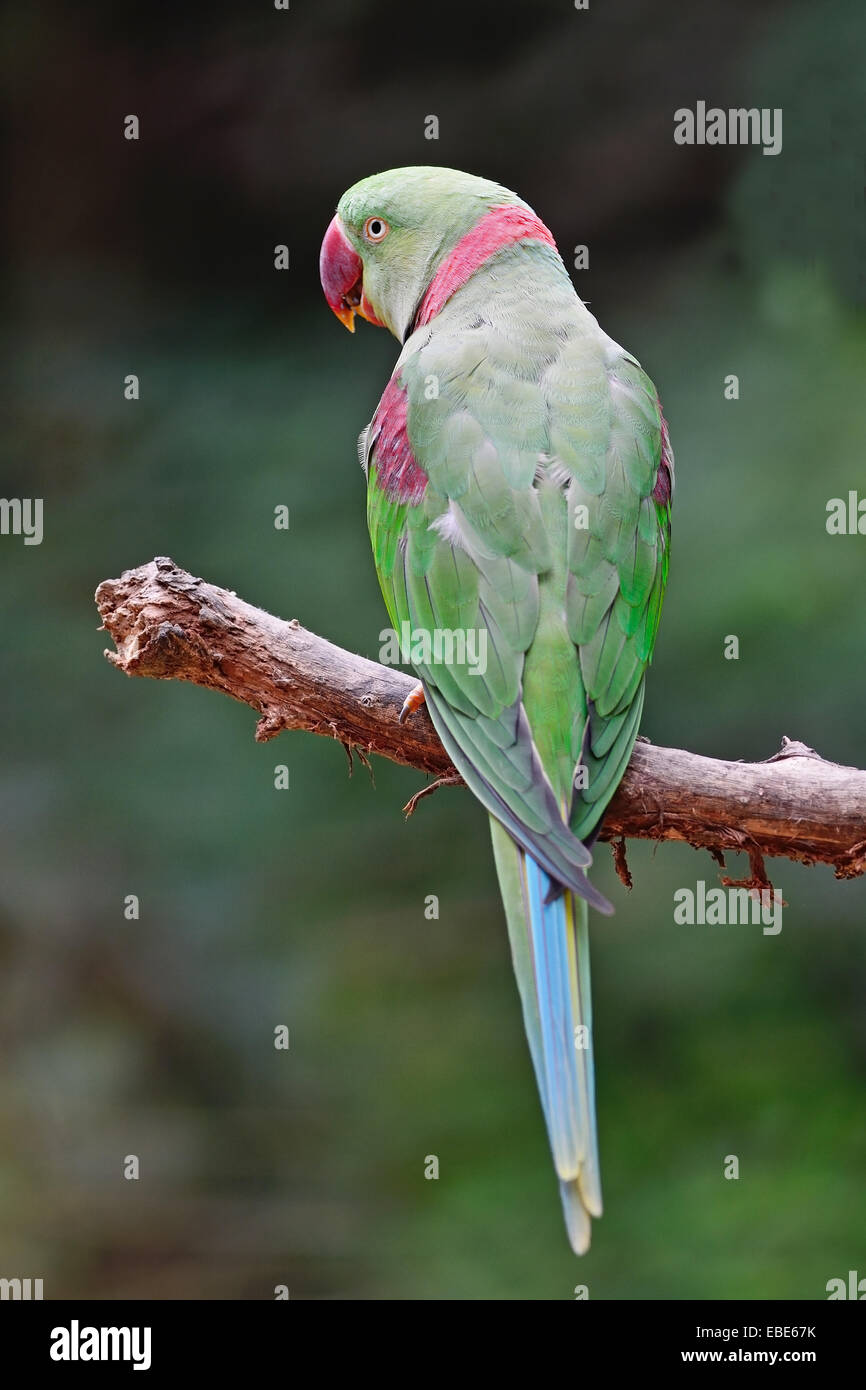
Green Parakeet, a male Alexandrine Parakeet (Psittacula eupatria), standing on a branch Stock
Bird Sponsorship Program. It takes an average of $583 a year to support one young, healthy bird who may be with us for upwards of two years, or even with us in lifelong residency if she/he requires it. Cost of living increases substantially for special needs and geriatric parrots - who now make up most of Free Flight's flock.
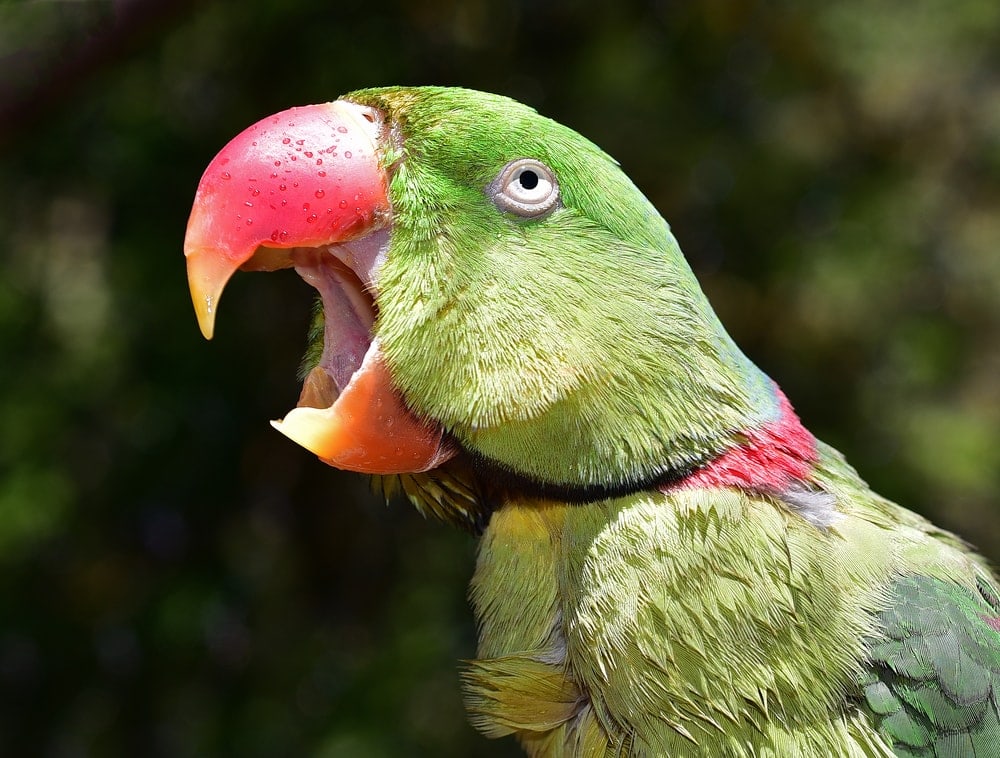
Alexandrine Parrot Care Guide Diet, Lifespan & More » Petsoid
Alexandrine parakeets, both males and females, are mostly green in color with large red beaks. They have yellow bellies, blue-gray on their heads, and a red patch on their shoulders. Males have a pink and black ring around their necks, making it easy to tell males and females apart.

Male Alexandrine Parakeet Stock Photo Image 32498230
Weight: 250 gr (9 oz) Clutch size: 2-4 Number Clutches: 2-3 per year Incubation of Eggs: about 24 days Fledgling Age (in the wild): 7 weeks (feathers fully grown) Average (healthy) Weaning Age: 10 to 14 weeks Reproductive Maturity: 3-5 yrs old Expected Lifespan: Between 25 to 40 years Alexandrine Parakeet Behaviour Rating - Scale of 1 to 10

Alexandrine Parakeet
Weight: 220 - 260g Color: The male Alexandrine parakeet distinctively has a pink back neck, a dark ring round the neck, alongside a grayish sparkle on the cheeks and nape. Meanwhile, the female Alexandrine parakeet has a pale grey neck ring. And finally, the chicks, look exactly like the adult female Alexandrine parakeet in color.

Pets Pakistan hand tamed male Alexandrine (RAW) parrot for sale
The P. e. avensis ssp. (Indo-Burmese Alexandrine Parakeet) is of same size as the nominate species, also measuring 58 cm (23 in), displaying a wingspan averaging anywhere between 19.4-22 cm (7.5-8.5 in) and looks much like the Nominate ssp. However, the top of the head and the nape are of a yellowish-green, the blue sheens are restricted to the cheeks and thus absent in the nape.

Alexandrine Parakeet male Pet birds, Parakeet, Parrot
Male Alexandrine parakeets have a pink collar on the back of the neck, with a black stripe on the forehead. The Nepali parrot reaches 58 cm in length and weighs 250-260 grams. The Alexandrine parakeet mates between November and April, the female lays between 2 and 4 eggs and is incubated for about 24 days, and the Nepalese parrot lives for up.
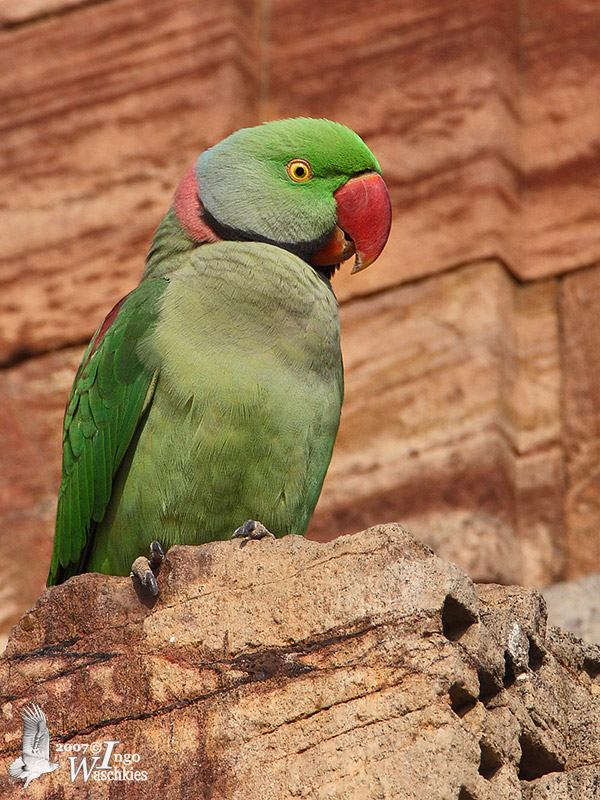
Male Alexandrine Parakeet photo Ingo Waschkies photos at
Large and long-tailed green parakeet with a bright red beak. Female lacks male's pink-and-black ring around the neck. Note the very long tail. Similar to significantly smaller Rose-ringed Parakeet; note Alexandrine's dark red shoulder patches and larger bill. Raucous and loud; gives piercing screeches and screams. Found in both dry and wet forest, typically in lowlands but occasionally in.
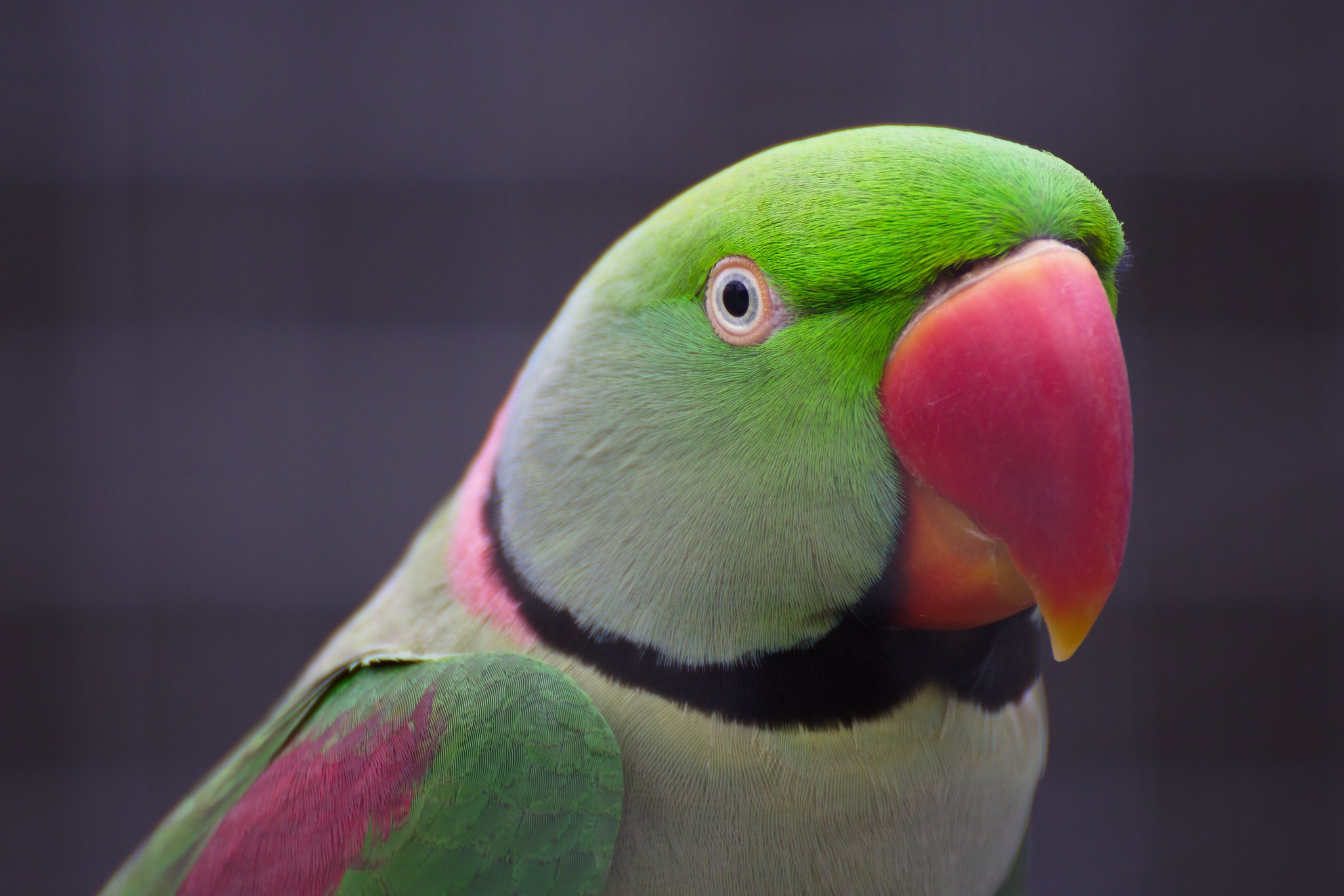
Alexandrine Parrot Aviculture Hub
It is an affectionate bird that tends to be a one-person bird, forming deep bonds with its human keeper. Species Overview Common Names: Alexandrine parakeet, Alexandrine parrot Scientific Name: Psittacula eupatria; Five subspecies include P. e. eupatria, P. e. nipalensis, P. e. avensis, P. e. magnirostris, P. e. siamensis

Alexandrine parakeet by ilovejd on deviantART Alexandrine parrot, Parakeet, Parrot bird
The Alexandrine parakeet is one of the largest parakeets, measuring 56 to 62 cm. It is predominantly green with a light blue-grey sheen on the cheeks and nape (back of the neck), yellow-green abdomen, red patch on the shoulders and massive red beak with yellow tips. The upper-side of the tail passes from green at the top to blue further down.

Parrots for sale Pets4Homes
Most male Alexandrine parrots start to develop their ring around 18 months while some can take as long as three years. The only sure way to sex theses parrots before sexual maturity is through DNA sexing. These parrots are not as popular as Indian Ringnecks in the pet trade because they do not exhibit the many mutations as their cousins.

Male Alexandrine Parrot Photo
Alexandrine parakeets are one of the most commonly sought parrots globally. Due to their affectionate nature, Alexandrine Parakeets can grow a very strong bond with humans. They eat a large variety of foods and can adapt to their surroundings easily. All of these traits make this parrot a great beginner pet.
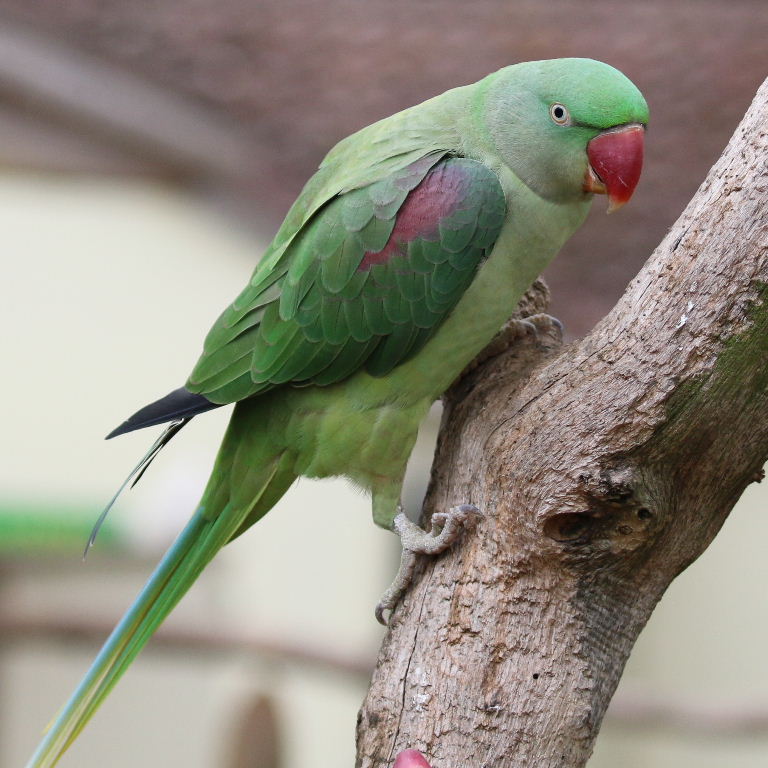
Alexandrine Parakeet
56-62. cm inch. The Alexandrine parakeet (Psittacula eupatria) is a medium-sized parrot from South and Southeast Asia. It is named after Alexander the Great, who transported numerous birds from Punjab to various European and Mediterranean countries and regions, where they were prized by royalty, nobility, and warlords. Di.

Male Alexandrine Parrot/Parakeet (Photo by Kelli Alsup) parrotpet parrotcare Parrot
A beautiful green parrot made famous by Alexander The Great, Alexandrine Parakeet is one of the largest parakeets with a size ranging anywhere between 22 to 24 inches. Many say that the difference can be accredited to the gender of the bird with males being on the upper end of the spectrum and females being at the other end.

Alexandrine Parakeet
Alexandrine parakeets are known to live for up to 25 - 30 years when raised in captivity with proper care. Also, there are recorded cases of Alexandrine parakeets living up to 40 years of age. The generation length is estimated at 7.6 years.
Baby Male Alexandrine Parrot in Saltley, West Midlands Gumtree
When they reach adulthood and reproductive age, male Alexandrine Parakeets feature a pink band on their nape, as well as a black stripe across their lower cheeks. Females lack both. Alexandrine parrot Male Alexandrine parrot Female Photo Credit: Dr. Raju Kasambe / CC BY-SA ( https://creativecommons.org/licenses/by-sa/4.0)